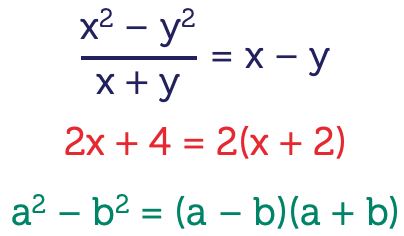Hi, this is Martin Lindsay from the Study and Learning Centre at RMIT University. This is a short movie on multiplying and dividing algebraic fractions. Let’s start by looking at a normal fraction, 18 over 24. Notice that 18 and 24 are divisible by six, six into 18 goes three, sixes into 24 goes four, in other words the answer is three over four. See that six is a common factor of 18 and 24. Similarly 120 over 70 has a common factor of 10 because 10 will divide into both 120 and 70 leaving us with an answer of 12 over seven.
Here’s an algebraic fraction. Notice how I’ve ... N minus N squared becomes N minus N minus N and in doing so the factor N minus N will cancel both top and bottom. Four eight squared Y over six Y squared, notice here how I’ve expanded the X squared and the Y squared to look for factors, here there’s a factor of Y top and bottom and there’s a factor of two that divides both into four and six. And finally six X plus nine Y in the denominator will actually factorise into three brackets two X plus Y three Y and in doing so the threes now become factors top and bottom.
Now let’s multiply algebraic fractions. Here’s a simple fraction where I’ve looked for factors both top and bottom, once that’s done you can cancel the factors in the numerator with factors in the denominator, as done with the previous slide. Similarly with an algebraic fraction the As will cancel because they are common factors, there’s also a factor of seven.
Here’s a more complicated algebraic fraction, but notice the method is still the same, X minus two is a factor, X is a factor and likewise with the second example, I’ve taken a factor of three out of three M plus 12 giving me three brackets M plus four, the M squared plus four M will factorise into M brackets M plus four, again notice in doing this I can now factorise the top and the bottom factors M plus four.
Dividing algebraic fractions is very much the same but remember the rule, when you divide by a fraction you change the division sign to a multiplication sign and then you invert the fraction that comes afterwards. Here I’ve done this and I’ve factored the eight and 12. Always cancel where possible.
The second example I’ve done exactly the same, the factor of four is on the top and 24 on the bottom, fours into four, fours into 24 and finally here’s another example where I’ve taken a factor of two outside of two A plus four allowing me to factorise the top and bottom of the fraction, the factor here being the A plus two.
Now try some problems for yourself. The answers to these questions are on the next slide. Thanks for watching this short movie.



